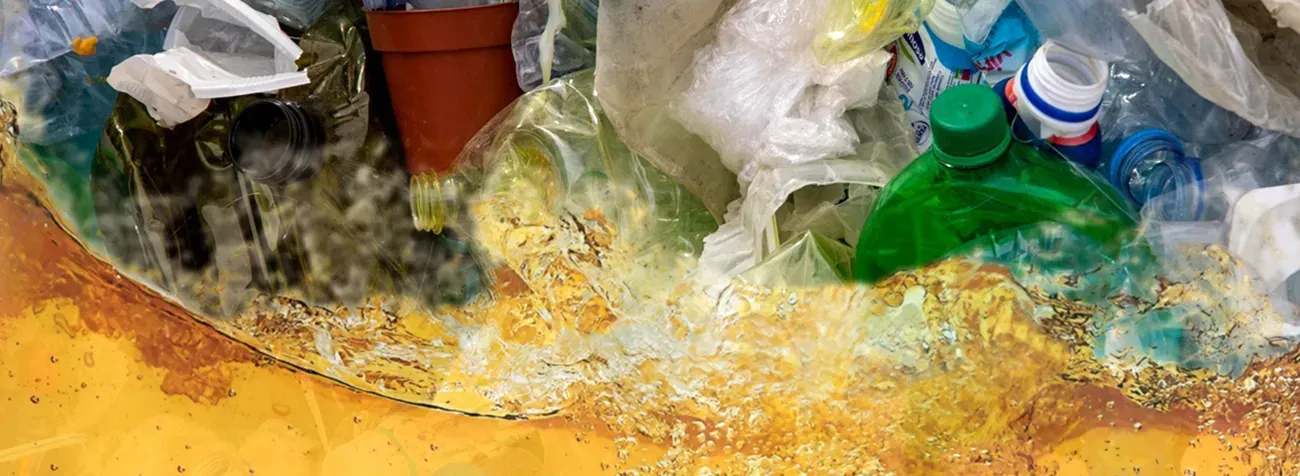Exploring the Components of Plastic Pyrolysis Oil
- By Beston Charcoal
- •
- 12 Mar, 2025
- •
Plastic pyrolysis oil is a valuable product derived from the thermal decomposition of plastic waste in an oxygen-free environment. The process of pyrolysis, which involves heating plastic waste to high temperatures, breaks down complex polymers into simpler molecules, resulting in a mixture of liquid hydrocarbons, gas, and solid carbon residue. The oil produced, known as plastic pyrolysis oil, contains various organic compounds, making it a potential renewable energy source and an industrial feedstock. Understanding the components of plastic pyrolysis oil is essential for its effective utilization in different applications, including fuel production, chemical synthesis, and other industrial uses.
The Composition of Plastic Pyrolysis Oil
Plastic pyrolysis oil is a complex mixture, primarily composed of hydrocarbons with varying molecular weights. The exact composition can vary depending on the type of plastic feedstock used, the pyrolysis temperature, and the reaction conditions of plastic to oil machine. However, a general analysis of the oil's components reveals several key categories:
1. Alkanes and Alkenes
Alkanes (saturated hydrocarbons) and alkenes (unsaturated hydrocarbons) are two major groups of compounds found in plastic pyrolysis oil. These molecules are typically composed of carbon and hydrogen atoms, and their structure can vary based on the type of plastic used as feedstock. Alkanes are generally more stable and are used in the production of fuels, while alkenes, with their double bonds, are often utilized in chemical synthesis processes such as polymerization.
Common examples of alkanes in plastic pyrolysis oil include methane, ethane, propane, and butane. Alkenes, on the other hand, include ethylene and propylene, both of which have significant industrial importance. The ratio of alkanes to alkenes can influence the overall usability of the oil in various applications.
2. Aromatic Compounds
Aromatic hydrocarbons, such as benzene, toluene, and xylene, are also present in plastic pyrolysis oil. These compounds are formed during the pyrolysis of certain plastics, especially polystyrene and polyethylene terephthalate (PET). Aromatic compounds are valuable in the petrochemical industry, where they serve as building blocks for the production of various chemicals, including solvents, plastics, and synthetic fibers.
The presence of aromatic compounds in plastic pyrolysis oil enhances its chemical versatility. However, these compounds may need to be removed or reduced for specific applications, such as fuel production, due to their high reactivity and potential to cause environmental pollution.
3. Oxygenated Compounds
In addition to hydrocarbons, plastic pyrolysis oil may contain oxygenated compounds, such as alcohols, ketones, and aldehydes. These compounds are formed during the pyrolysis of plastics that contain oxygenated functional groups, such as polyvinyl chloride (PVC) and some bioplastics.
Alcohols like methanol and ethanol can be found in trace amounts in pyrolysis oil, depending on the feedstock. These compounds are useful in chemical production, such as the synthesis of biodiesel or as solvents in various industrial processes. However, their presence may also impact the fuel quality and require further refining to meet certain standards.
4. Sulfur-Containing Compounds
Plastic pyrolysis oil derived from certain types of plastic, particularly those that have been contaminated with sulfur compounds, may contain sulfur-based hydrocarbons, such as hydrogen sulfide (H2S). These sulfur-containing compounds can be problematic in applications where the oil is used as fuel, as they can cause corrosion and other operational issues.
The presence of sulfur can be reduced through various post-pyrolysis treatments, such as desulfurization processes, to make the oil more suitable for use as a clean fuel. However, in certain industrial applications, sulfur compounds may have value as feedstock for sulfuric acid production or other chemical processes.
5. Heavy Fraction Components
In addition to the lighter, more volatile hydrocarbons, plastic pyrolysis oil also contains heavier fractions, such as tar and waxes. These components are often produced when the pyrolysis process is carried out at lower temperatures or when plastic waste with higher molecular weights is used.
The heavier fractions of pyrolysis oil can be problematic when used as a fuel due to their high viscosity and tendency to cause blockages in combustion systems. However, these components can be processed into useful products, such as lubricants, or further refined to yield higher-quality fuels.

Factors Affecting the Composition of Plastic Pyrolysis Oil
The composition of plastic pyrolysis oil can vary significantly depending on several factors, including the type of plastic feedstock, the pyrolysis process parameters, and the reactor design. Some key factors include:
- Feedstock Type: Different plastics have distinct molecular structures, which influence the composition of the pyrolysis oil. For instance, polyethylene and polypropylene tend to produce lighter hydrocarbons, while polystyrene may yield a higher proportion of aromatic compounds.
- Temperature: The pyrolysis temperature of plastic pyrolysis reactor plays a crucial role in determining the molecular breakdown of the plastic. Higher temperatures generally result in a greater yield of light hydrocarbons, while lower temperatures may produce more tar and waxes.
- Reaction Time and Pressure: Longer reaction times and higher pressures can affect the cracking process, influencing the overall composition of the oil. Shorter reaction times may result in higher yields of gas and liquid products, while extended processing times can lead to more tar formation.
